|
Turning at Another Little Brown Sign Utah had been frying on our way up, so we took a cooler route through Wyoming on our return from the August 2017 solar eclipse. As we drove south through deserted territory, I saw the little brown sign first. “Hmm, must be protecting the layered buttes up there. Let’s stop.” 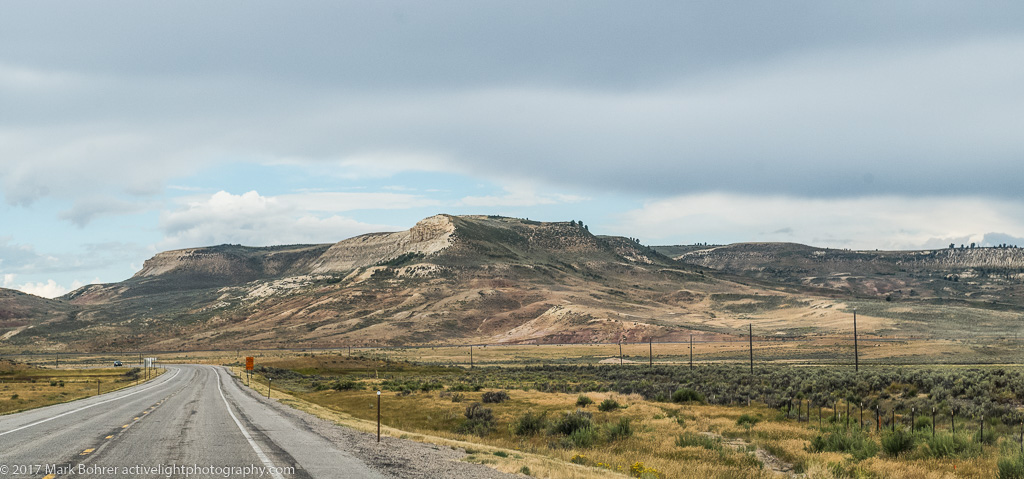 Fossil Butte But I spoke too late and we blasted past. Seeing my frown, Pat turned us around and drove in to Fossil Butte National Monument. 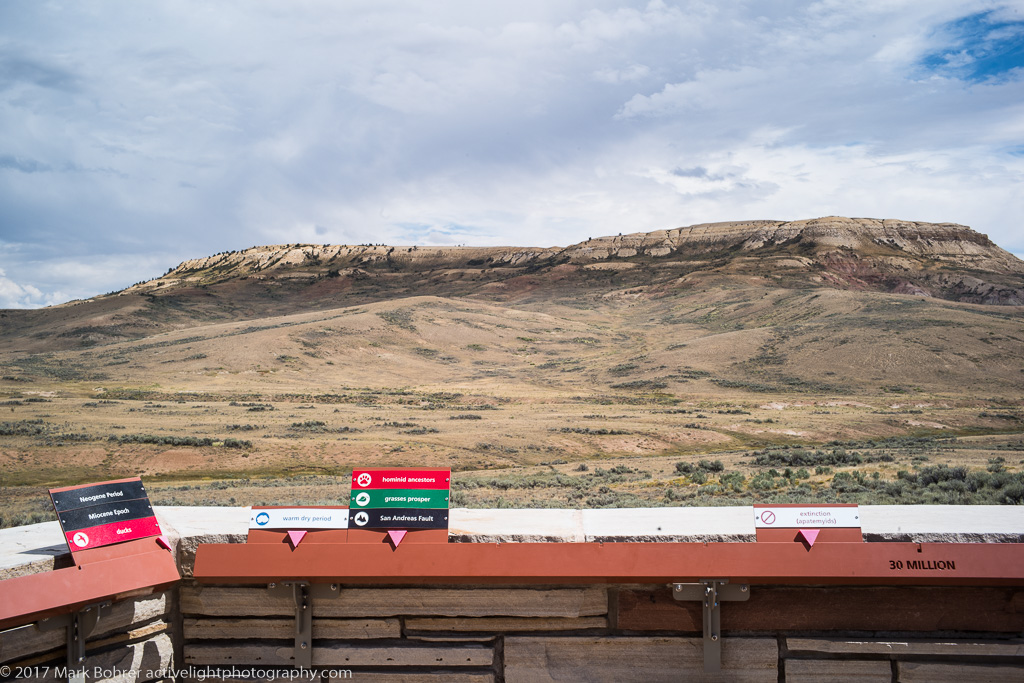 A Million Years in Nine Inches Along the access road, signs said things like, “100 billion,” counting down as we drove further in. The visitor center was almost hidden behind a ridge, reminding me of Denali’s Eilson Visitor Center. The sign timeline continued on the railing around the center, finally getting down to Homo Sapiens near the end of the last few inches. 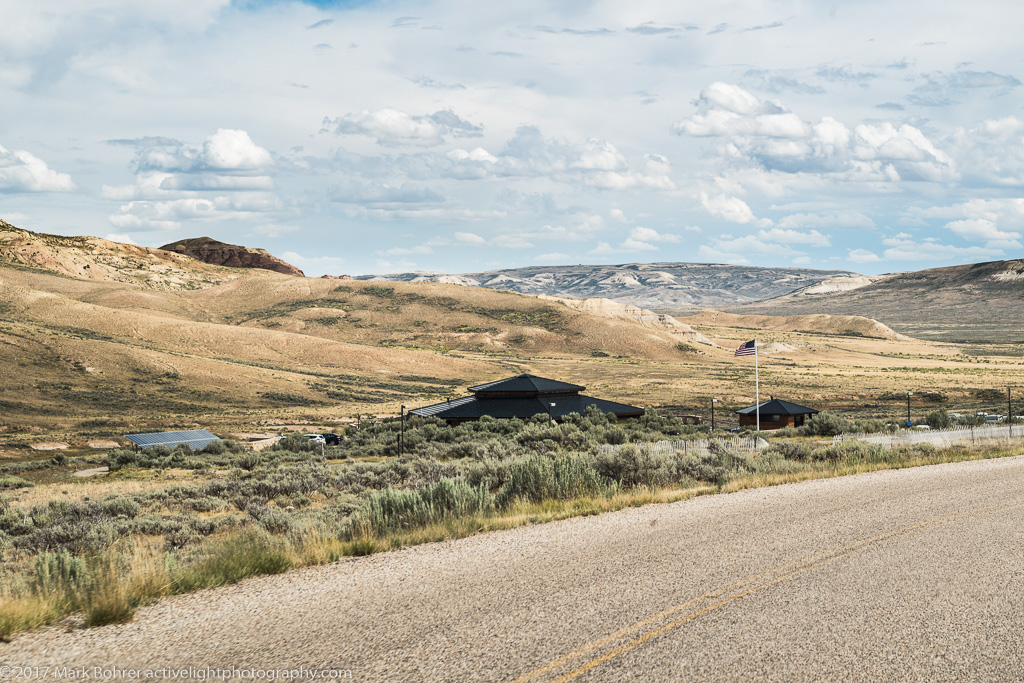 Hidden visitor center We walked inside, past enormous castings of turtle fossils. We discovered the history of fossil excavators and quarry sites as we explored the center. As I suspected, most fossils no longer exist in the field, long since carved out and shipped to buyers for museums in the eastern U.S. It’s a bit like expecting potsherds on the ground at Chaco Canyon – they were all collected or stolen long ago. 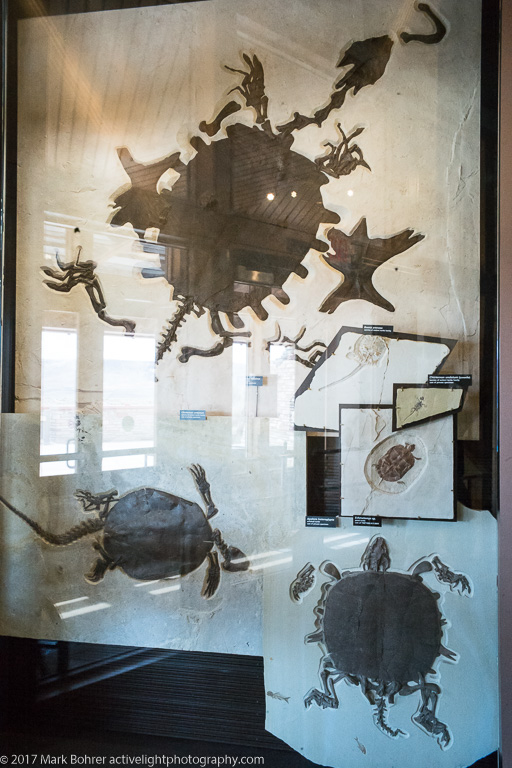 Giant long-tailed turtle fossils From a Large Inland Lake 50 million years ago, the land surrounding Fossil Butte was a lakebed. Things were subtropical back then, with over 30 inches of rain every year – more than enough to fill the lake. Houston gets almost 48 inches, so 30 was approaching the humid Houston wetness. You’d never know it today, with the area getting just a bit more than Albuquerque’s 8.7 inches. The lake’s food chain included plankton, which fed herring, who in turn fed gar and dogfish predators. There were also catfish, freshwater rays, and the crustaceans they fed on. Long-tailed turtles and monitor lizards made their home there too. All these guys hung out near the upper surface. The lower lake waters contained toxic hydrogen sulfide (H2S) emitted from the lakebed, so everyone stayed away from the bottom. Periodically, excessive H2S (possibly from earthquakes), changes in salinity or temperature, or drought (or some combination of these things) caused mass die-offs. Dead fish and other marine animals sank to the bottom and were covered by calcium carbonate-laced river water and silt and flattened. Their bones calcified and became 2-D imprints, pressed and preserved by more and more layers over the millenia. Quarrying for Fossils Early western explorers were aware of the fossils, but their study only began with the arrival of the Union Pacific in the late 1860s. Coal miners brought west by the railroad found most of the early fossils, selling them to collectors in the eastern US and around the world. Prominent among fossil hunters was Robert Lee “Peg Leg” Craig, a former miner who sold many finds to the Smithsonian and Yale between 1897 and 1937. Fossil Butte was also part of the “Bone Wars” between paleontologists Edward Drinker Cope and Othniel Charles Marsh, both racing to find the first dinosaur fossils in the American west. Illegal fossil excavations led to BLM protection for Fossil Butte and the surrounding lands well before the Monument proposal in 1964. Fossil Butte National Monjument was proclaimed in 1972 – these things take time to negotiate. 100+ years of collecting at Fossil Butte have yielded some of the worlds best-preserved traces of an ancient ecosystem. The fossils include everything from fish, mammals and birds to a rare frog and the insects and plants it fed on. 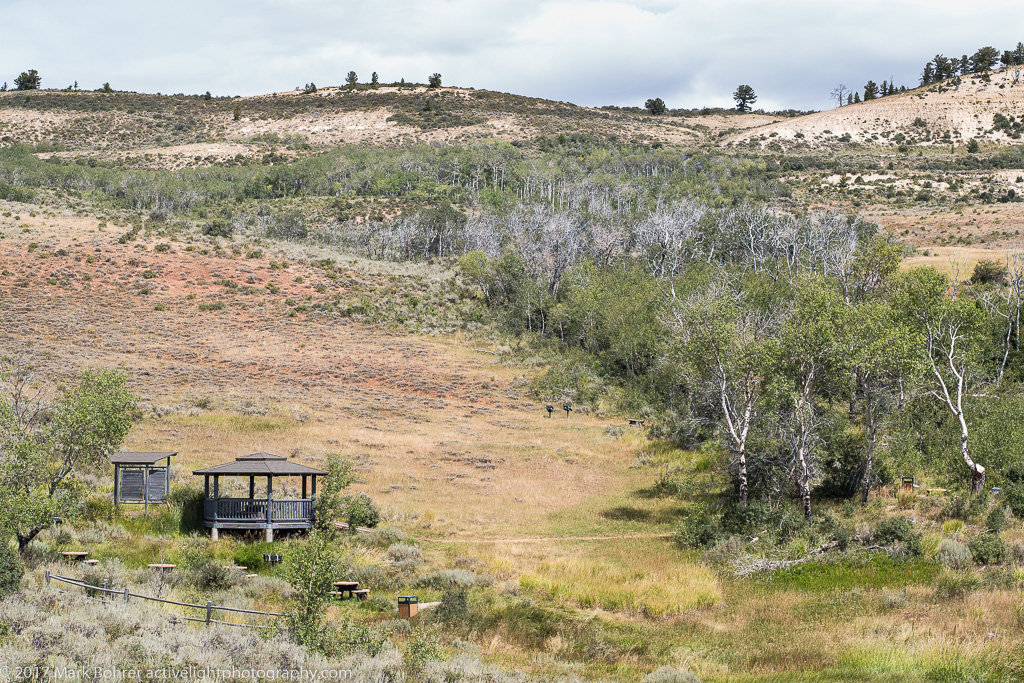 Picnic gazebo We enjoyed driving part of the 5-mile loop, stopping at a picnic gazebo and exhibit. Our Berner Daisy demonstrated a total disinterest in anything but the smells around the edges. 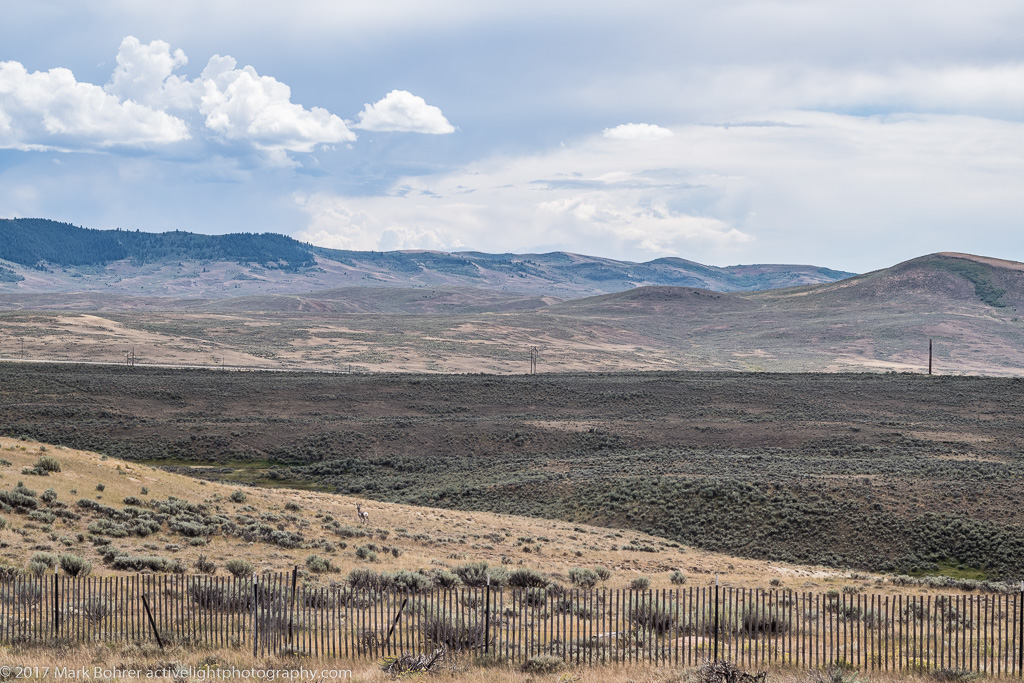 Distant pronghorn and land lines Clearing storms made gorgeous cloud patterns across the sky in every direction. I haven’t done so much landscape photography in a long time, but this gorgeous site wouldn’t let me take a bad picture. 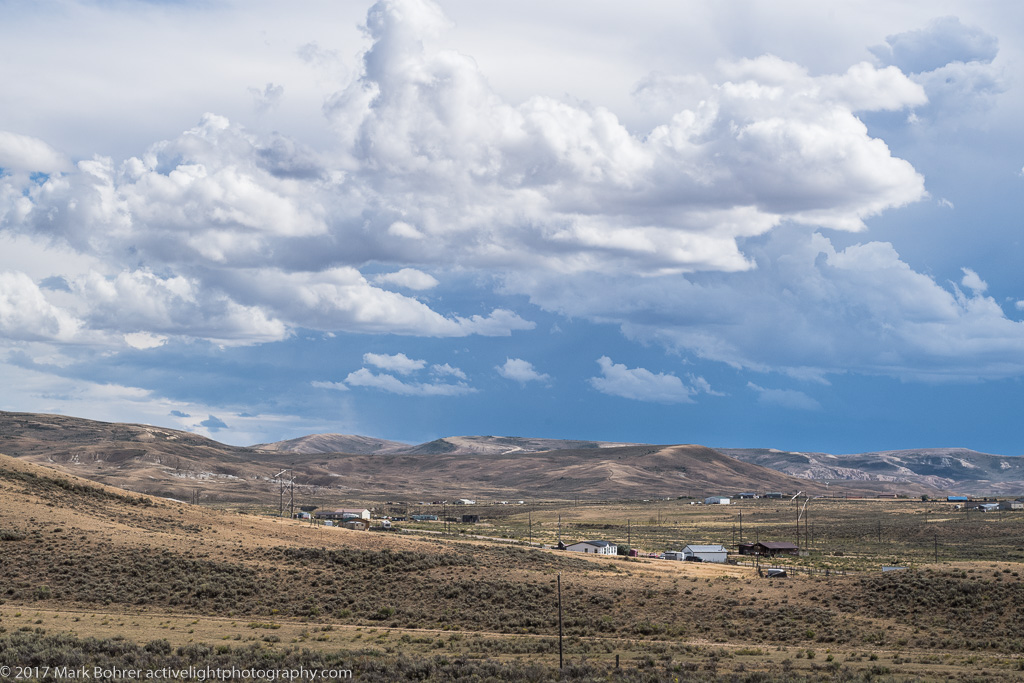 Clearing storm We needed to move on to Rock Springs, Wyoming, so we didn’t stay long. But I suspect a return trip is in our future. 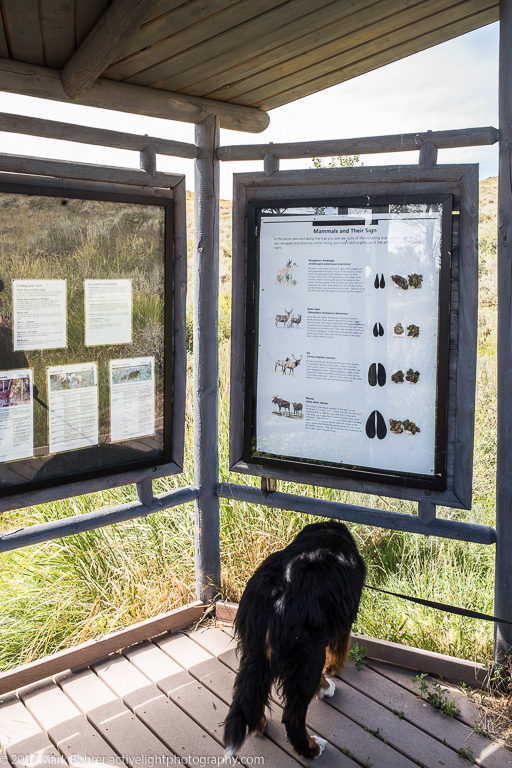 Daisy ignores the display Shot Notes I used a Leica M10 with mostly 28mm, 35mm and 75mm lenses. The camera’s ISO setting dial and exposure compensation locked up around the time we got to Fossil Butte, but I worked around being stuck at ISO 200. It was a little like the old film days, where you got one ISO for 36 exposures. The ISO dial lockup is a known problem. Leica’s quality control has slipped a bit since the 1960s. More Information Fossil Butte National Monument, accessed from https://www.wyohistory.org/encyclopedia/fossil-butte-national-monument Fossil Butte National Monument, accessed from http://www.americansouthwest.net/wyoming/fossil-butte/national-monument.html Fossil Butte – Fossils, accessed from https://www.nps.gov/fobu/learn/nature/fossils.htm Bone Wars: The Cope-Marsh Rivalry, accessed from http://www.ansp.org/explore/online-exhibits/stories/bone-wars-the-cope-marsh-rivalry/ Lost World Locked in Stone at Fossil Lake, accessed from https://www.livescience.com/37276-lost-world-found-at-fossil-lake.html Proposed Fossil Butte National Monument, accessed from https://www.nps.gov/parkhistory/online_books/fobu/fobu_proposed.pdf The Geologic History of Fossil Butte National Monument and Fossil Basin, accessed from https://www.nps.gov/parkhistory/online_books/fobu/contents.htm 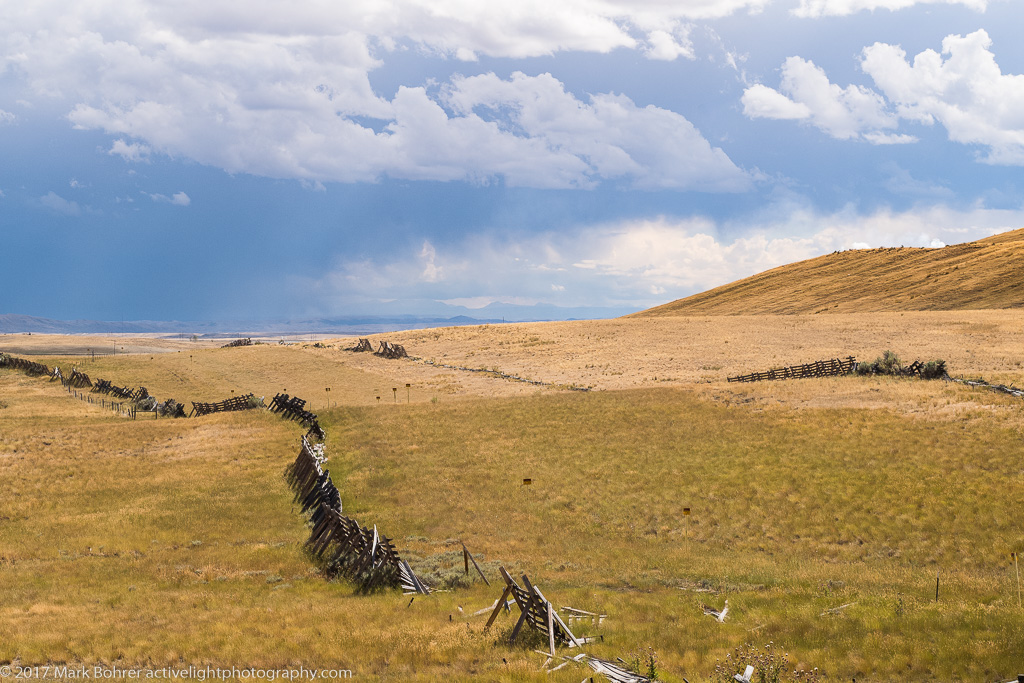 Wyoming snow fencing |
(408) 483-3782
Curious about how to shoot ruins?(408) 483-3782

Recent Comments